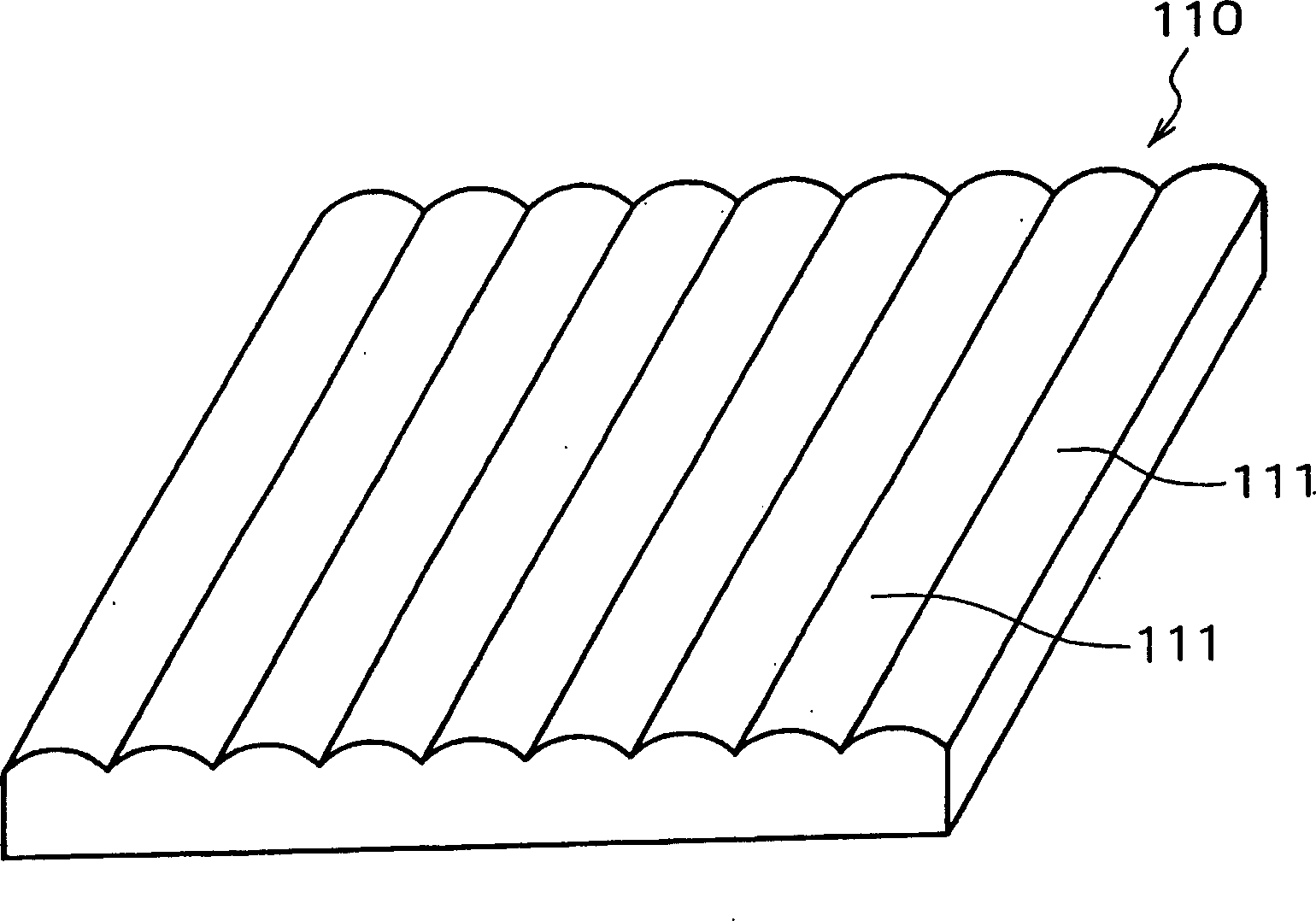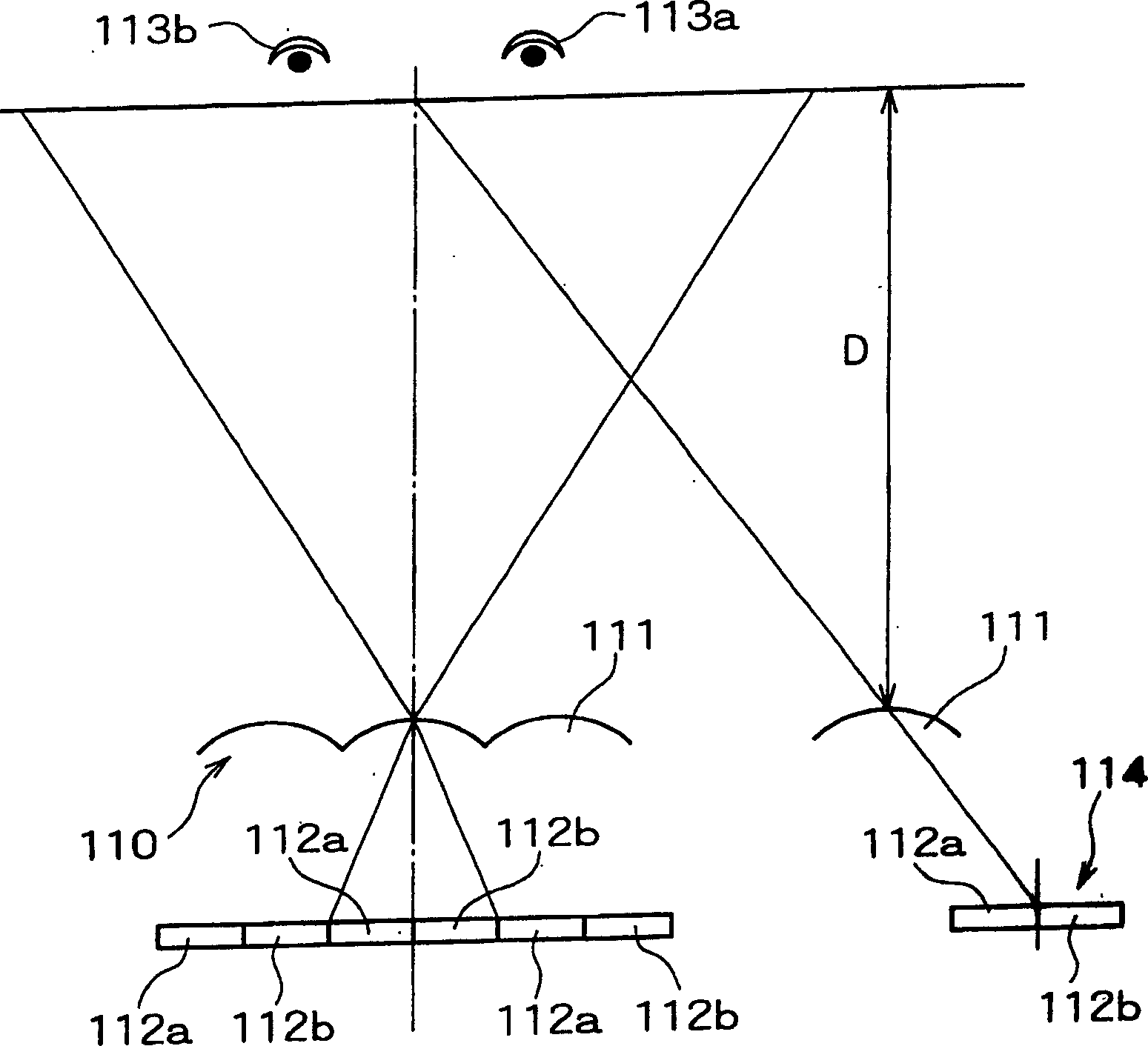Three-dimensional image display device, portable terminal device, and lenticular lens
A technology of image display and display panel, applied in the direction of lens, image communication, instrument, etc., can solve the problems of lower display quality, glare, low visibility, etc., and achieve the effect of improving display quality
- Summary
- Abstract
- Description
- Claims
- Application Information
AI Technical Summary
Problems solved by technology
Method used
Image
Examples
Embodiment Construction
[0043] Because in the existing three-dimensional image display device of the lenticular method, the striped figure on the chassis is seen and overlaid on the display image, so that the quality of the display image recognized by the viewer is reduced and thus This strip pattern becomes an eyesore in image observation. Then, the inventors of the present invention put themselves into research on the lens pitch L of the cylindrical lens of the double-sided lens and the visibility of the band pattern appearing on the three-dimensional image, and found that when external light is reflected on the lens surface , you will see a ribbon graph.
[0044] The total width of the bright and dark portions of the stripe pattern is equal to the lens pitch L of the cylindrical lenses, and the width of each of the bright and dark portions varies according to the characteristics of external light. Figure 5A is a standard view showing the reflection of light at the surface of the lens when the ext...
PUM
 Login to View More
Login to View More Abstract
Description
Claims
Application Information
 Login to View More
Login to View More - R&D
- Intellectual Property
- Life Sciences
- Materials
- Tech Scout
- Unparalleled Data Quality
- Higher Quality Content
- 60% Fewer Hallucinations
Browse by: Latest US Patents, China's latest patents, Technical Efficacy Thesaurus, Application Domain, Technology Topic, Popular Technical Reports.
© 2025 PatSnap. All rights reserved.Legal|Privacy policy|Modern Slavery Act Transparency Statement|Sitemap|About US| Contact US: help@patsnap.com



